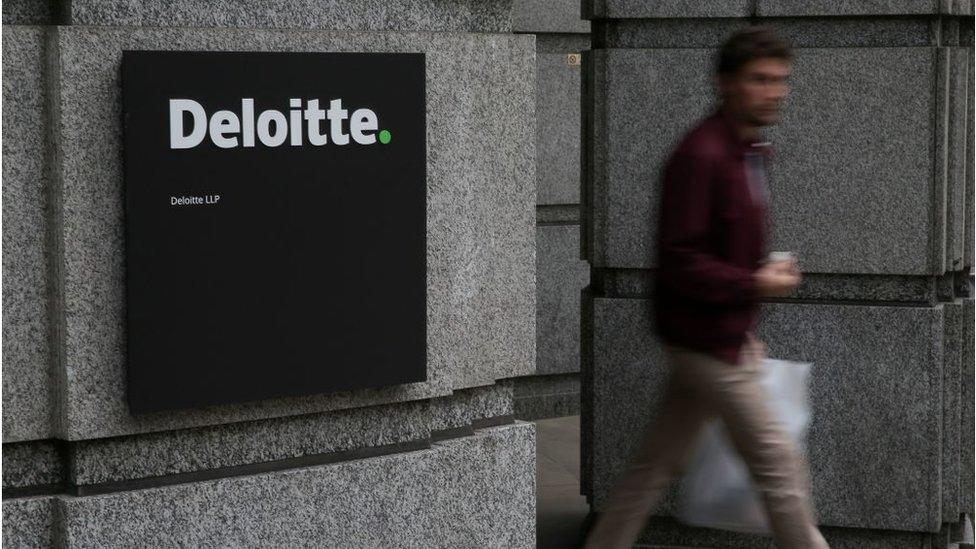Most companies yet to report their gender pay gap
- Published

Only a fraction of companies have revealed their gender pay gap
Six months after the government ordered large firms to reveal their gender pay gaps, the majority have yet to publish their figures.
Charities, private and public sector employers with 250 or more employees must publish their figures by April 2018, in a bid to tackle workplace discrimination.
Only 85 of 9,000 companies required to publish their pay data have done so.
There are concerns firms are delaying publishing to avoid negative publicity.
The business lobby group, the CBI, said: "Businesses have until April 2018 to publish their gender pay data. While some firms have published their gender pay gap already, many others are in the process.
"As with any new regulation, firms will want to make sure they get it right and will use the time available to them."
Jane Gratton, head of business environment at the British Chambers of Commerce (BCC), said "many firms" were likely to be in the process of preparing the statistics.
"When all the figures are compiled, they need to be looked at in context. The government should publish sector averages so firms can benchmark themselves against others in their industry, and ensure they are doing all they can to attract and retain the vital skills women bring to the workplace."
'Not an option'
The companies required to comply with the new law collectively employ more than 15 million people, just under half of Britain's workforce.
Minister for Women Anne Milton told the BBC it "is not an option, it is the law" for firms to reveal their gender pay gap.

Deloitte is one of the few companies to have reported
"Almost every employer will have a gender pay gap, but waiting to report won't change those figures."
She said that shining a light on pay disparity would help companies to close the gap.
'Fear factor'
Employment lawyer Suzanne Horne, a partner at Paul Hastings, says before publishing their gender pay gap data, employers will want to check it doesn't amount to a breach of equal pay laws, which stipulate that men and women must be paid the same for doing the same or an equivalent role.
Firms also face a "fear factor" after the furore surrounding the companies that have disclosed, she says.
"Employers will be very conscious of the negative publicity that the BBC and other large organisations have received since publishing their charter information this year."
If employers fail to comply by the April 2018 deadline, they will be contacted by the Equalities and Human Rights Commission (EHRC).
"While there is some debate around whether the EHRC actually has the specific powers or resources to take action, the real sanctions are reputational risk and employment relations," notes Ms Horne.
In 2016, the UK gender pay gap was 9.4% for full-time workers, or 18.1% for all staff.
However, the pay gap for the UK's 3.3 million managers is significantly higher at 26.8%, according to recent analysis. That means female managers are paid an average of nearly £12,000 less than their male counterparts.

Case study: The bank committed to closing its 31% pay gap

Helen Rose, chief operating officer of TSB, said publishing pay figures 'made us look really hard at the structure of the workforce'
Challenger bank TSB published its 2016 figures in July, revealing a median gender pay gap of 24% and a mean pay gap of 31% .
TSB's chief operating officer, Helen Rose, who ran its Gender Balance Matters Campaign, said it has proved a "useful exercise".
"It made us really look hard at the structure of our workforce, what we're doing well and where we could improve.
"It's possible that some companies are concerned about how their pay gaps will be reported. However, our experience is such that our employees have welcomed our transparency and commitment to closing our pay gap."
TSB says it has delved in to the reasons for its gender pay gap, which it says is partly for structural reasons as 95% of its part-time workforce are women.
It's working on various ways to close the gap including a buddy scheme for parents coming back to work, a rising stars sponsorship scheme and a returnship programme.
